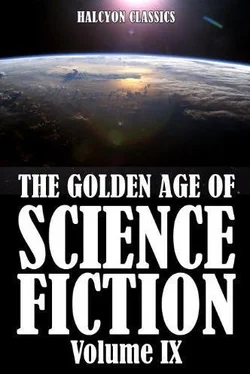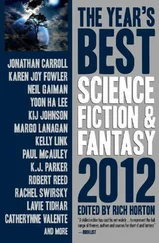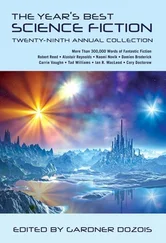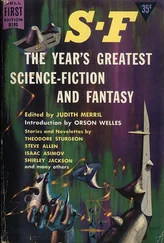“Well, not altogether,” I replied laughingly; “there should always be a healthy reaction after a cold douche. Much depends on the intensity of the cold applied, and you know that if you touch extremely cold metal it burns you like hot iron!”
“Professor,” chimed in M’Allister, “maybe I was a bit warm, but really your facts were not so cold as to make me hot.”
“I’m glad to hear you say so,” I answered.
“At all events, Professor,” continued John, “whatever may be M’Allister’s actual temperature, I’m simply burning to know something about that very striking formation with the steel-grey coloured flooring which is situated not very far down from the North Pole, and a little to the east of the central meridian.”
“That,” I said, “is a large walled plain called Plato, and, being on a receding curve of the moon, it is seen from the earth foreshortened, so that it appears to be elliptical in shape. It is about sixty miles in diameter, and encloses an area of 2700 square miles, which is just about the area of Lincolnshire. The general height of the mountain walls is over 3600 feet; one mountain on the east is nearly 7500 feet high, and others on the north and west are but little lower.
“You will notice that there are several breaks in the walls, and a large one on the south-west; whilst on the inner slope of the mountains you can see where a great landslide has occurred.
“It is rather singular, John, that in your first selection you have chosen a formation which is one of the lunar mysteries!”
“Ah! Professor,” said John, smiling, “I always was lucky! What is this dreadful mystery?” he asked, with an assumed expression of awe.
“Oh, it’s not a ghost story, John, nor anything to make your flesh creep,” I said rather grimly. “Usually the floor of a walled plain becomes brighter as the sun rises higher and higher in the sky, but Plato actually becomes darker under a high sun. By some it has been thought that this is merely the effect of contrast with the very bright surroundings of this formation, and that there is no actual darkening of the tint. This is certainly not the case, for I have examined it carefully myself with the telescope—shutting out all the bright surroundings from the field of view, but the floor still appeared equally dark.
“Others have suggested that the hot sun causes the growth of some kind of vegetation all over the plain, the ripening of which makes the floor darker in tint. As regards this suggestion, it is the fact that upon Mars the old sea-beds are the places where vegetation is most luxuriant at the present time; so, if Plato were at one time an enclosed sea, it might not be impossible that vegetation in some low form might grow and be nourished by the crude gaseous remains of a former atmosphere. A greenish tint has occasionally been noticed by some observers, also several light streaks across the floor, as well as several small craterlets, which have been duly noted on the maps.
“But before we go any further we will have a better means of seeing, for it is rather uncomfortable looking directly down upon the moon. So, John, just lend a hand and we’ll fetch one of those large mirrors.”
This was done, and the mirror suspended with the upper part projecting forward, so that when adjusted at the proper angle we could sit and look straight into the mirror before us and see the reflection of all that was below. We could still look down at the objects, if we wished to do so, without shifting our position.
“There, John,” I remarked, as we completed this arrangement, “I have already arranged mirrors in the proper positions at the windows in the forepart of the vessel, so that in future M’Allister will be able to see what is nearly straight ahead of him. Now you will understand that I had a scientific use for the mirrors I provided, and did not require them merely to admire my beautiful face in as you suggested.”
John laughed as I recalled his suggestion, saying, “All right, Professor, I know you generally have a good reason for what you do.”
Now, being more comfortably seated, I drew their attention to some small isolated mountains on the area to the south of Plato, pointing out Pico, an isolated mountain over 8000 feet in height, and another with three peaks not very far from it. To the north-east of these, some distance away, are the Teneriffe and Straight Ranges; also isolated groups.
“You will remember,” I remarked, “that I said there were several formations which seemed to me to owe their present appearance to the action of water. Now look well at all this district before us—does it not seem to bear out my contention? Those numerous small mountains and isolated groups were not, I think, originally isolated, but connected with the adjoining ranges. If we assume that Plato was once an enclosed sea, or lake, which burst through the mountain walls—possibly owing to their being weakened or broken by volcanic action—there would have been a tremendous outrush of water, which must have carried away a good deal of the softer material of these hills and mountains; whilst, in after years, the continual wash of the waters, combined with aerial denudation, would gradually have worn away all but the hardest parts of these formations.
“Most probably the whole of the surrounding area was also at some time a sea, though volcanic action has since altered its surface conformation, and in places it bears evidence of having been covered with lava. It is not unusual on our world for volcanoes to burst up from under the sea, so even the evidence of volcanic action does not, as some seem to think, negative the possibility of water ever existing here; and it may not be inappropriate to point out that our hydrographers have proved that our ocean-beds are not always smooth, but are often diversified by high hills and deep valleys.”
M’Allister here interjected: “Professor, would you kindly tell us something about that fine range of mountains over yonder, just to the right hand?”
“Oh yes,” I replied; “I was just about to mention that mountain range, which is called the Alps after those in Switzerland; and that peak on the front portion, just south of the great valley you see, is named Mont Blanc, and is about 12,000 feet in height.
“You will notice a very large number of peaks in this and the other neighbouring ranges—in fact, several thousands have been marked on our large maps.
“Cutting diagonally in a north-westerly direction, completely through the Alps, you will notice a long and deep valley. This is known as the ‘Great Alpine Valley,’ and is over eighty miles long, and varies from about three miles to six and a half miles in width. At the eastern end it is some 11,000 feet deep, debouching on to the plain in several comparatively narrow passes, whilst at its north-western extremity it is very shallow, and emerges on to what is known as the Sea of Cold, which covers an area of about 100,000 square miles. This valley seems to afford another example of formation by the action of water.
“Amongst the three thousand peaks comprised in the Apennine range just below the Alps, are several mountains of considerable altitude,” I remarked, pointing out Mount Huygens, nearly 20,000 feet high, Mount Hadley, 15,000 feet, and Mount Woolf, 12,000 feet in height. “This range curves round towards the east, and finishes with a fine ring-plain called Eratosthenes—some thirty-seven miles in diameter, with a floor depressed 8000 feet below the lunar surface. It encloses a central mountain, and on the east wall there is one peak which rises 16,000 feet above the floor.
“The ranges in this part of the moon are, perhaps, more like those on our earth than others to be found on its surface, but much more wild and rugged.
Читать дальше












